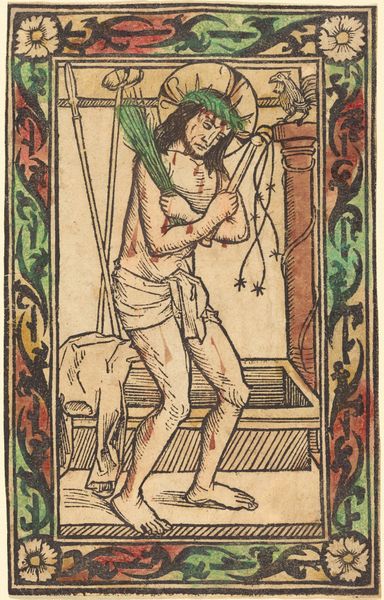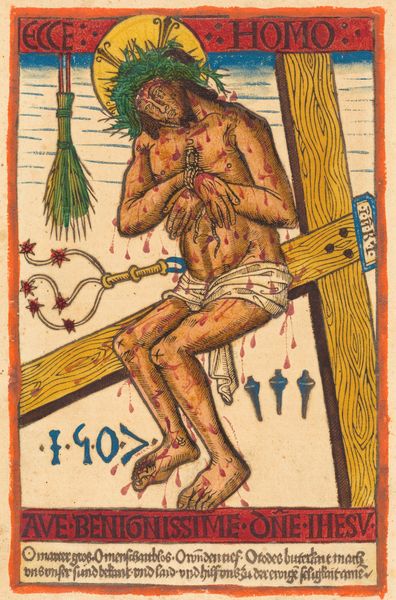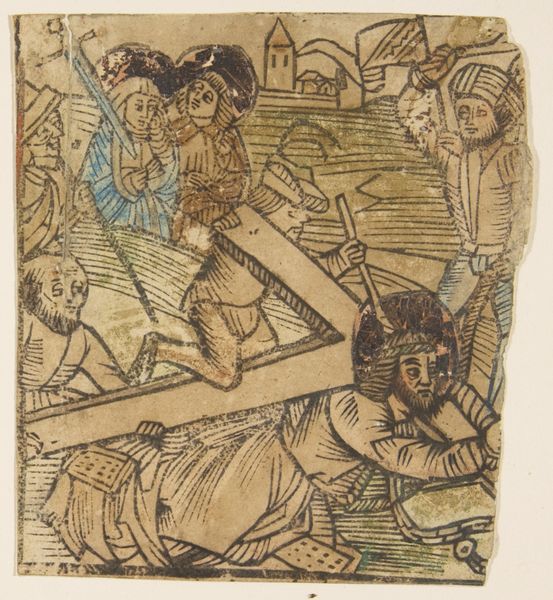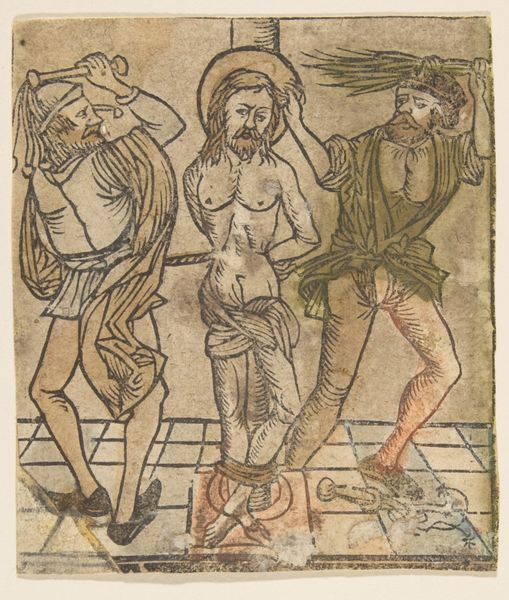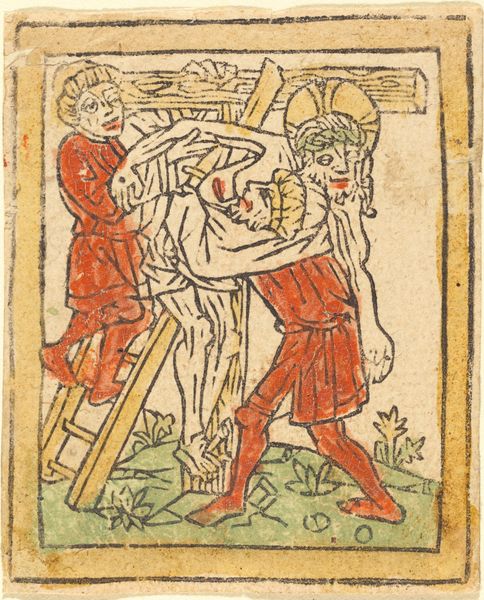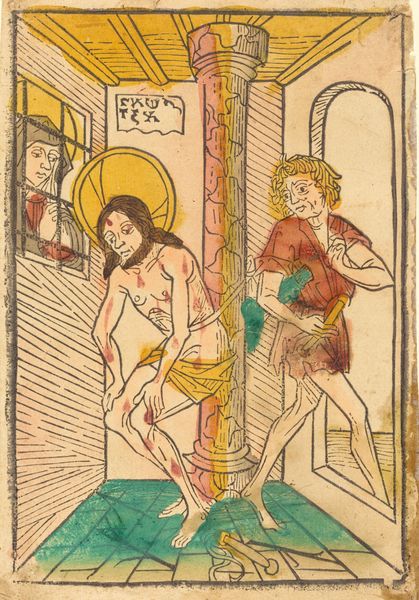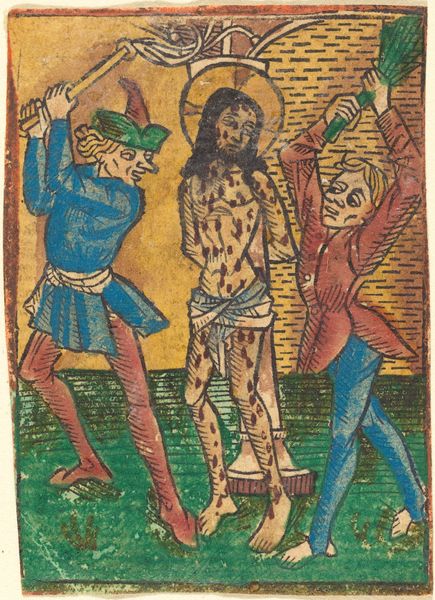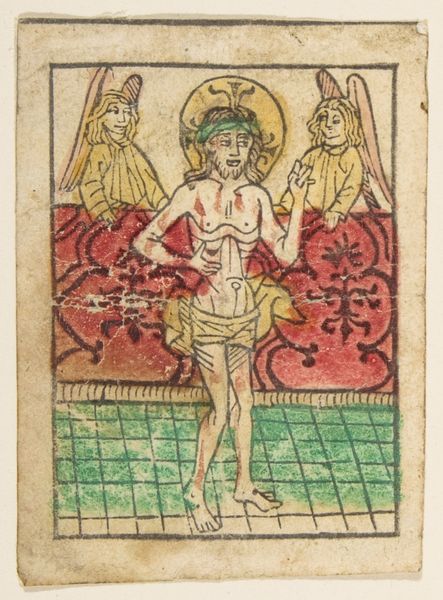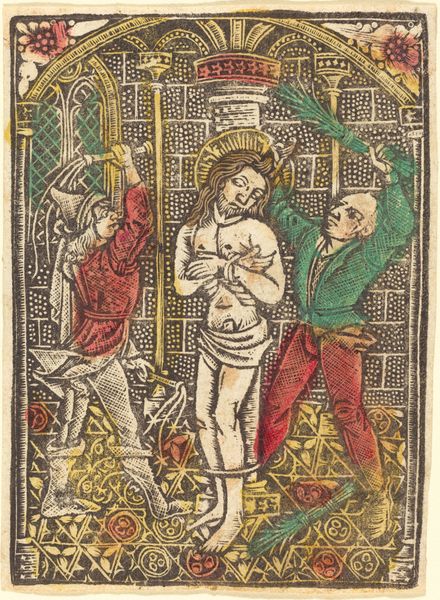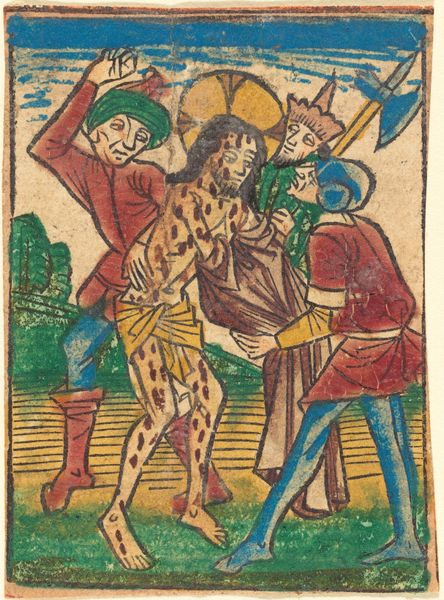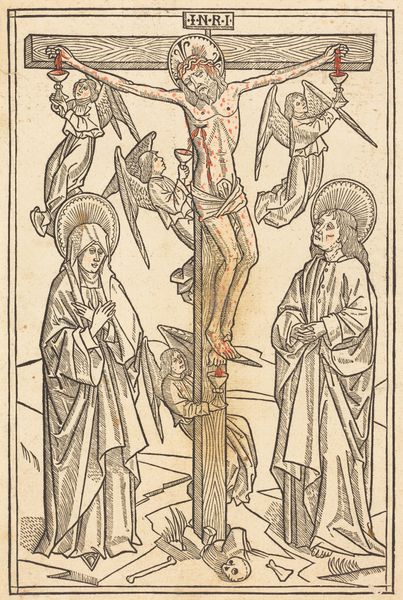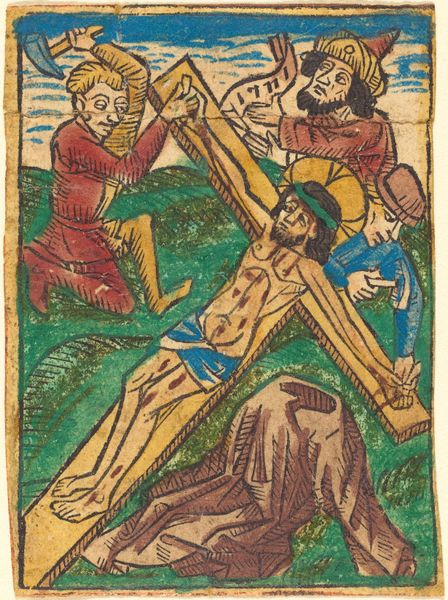
Album with Twelve Engravings of The Passion, a Woodcut of Christ as the Man of Sorrows, and a Metalcut of St. Jerome in Penitence 1480 - 1500
0:00
0:00
print, woodcut
#
portrait
#
aged paper
#
toned paper
#
medieval
# print
#
sketch book
#
figuration
#
personal sketchbook
#
cross
#
woodcut
#
history-painting
#
northern-renaissance
Dimensions: Overall: 10 1/4 x 8 1/16 x 1/2 in. (26 x 20.4 x 1.3 cm)
Copyright: Public Domain
Curator: Look at this fascinating album page. The Met attributes this work, “Album with Twelve Engravings of The Passion, a Woodcut of Christ as the Man of Sorrows, and a Metalcut of St. Jerome in Penitence” to Israhel van Meckenem and dates it between 1480 and 1500. Notice that the woodcut takes center stage. Editor: Striking image, but overwhelmingly sad. The hunched figure of Christ dominates the composition. There is a real flatness to the figure due to the style of the linework. It is particularly noticeable around the limbs. The artist sacrifices realistic proportions to highlight his pain. Curator: Precisely. Note the specific symbolism in his presentation as “Ecce Homo”— "Behold the Man.” His captivity is emphasized through the rope around his wrists. The crown of thorns, naturally, symbolizes his suffering and kingship denied, though originally it was to mock the notion of that kingship. He sits at the cross where tools foreshadow his torture. This depiction aims to evoke not only pity but also to communicate a profound theological truth. Editor: The limited palette, though, draws attention to these symbolic elements by removing naturalism as a potential distraction. The woodcut relies heavily on stark contrasts of light and shadow which increases its emotional intensity. And consider the rough texture of the woodcut itself; the surface imperfections add depth and a tangible quality to the scene. Curator: The added color is critical. It softens the inherent brutality of the Passion story while still underscoring Christ’s sacrifice. You also see a medieval town sketched into the background. It emphasizes the historic moment while connecting it to contemporary experience for people of that period. The original viewers might have also made some kind of devotional or emotional association between the figure in this scene and Saint Jerome, as the album references another image, his Penitent metalcut. Editor: The Latin phrase at the top, followed by a passage in a Germanic language on the bottom edge… Do you think that was integrated into the print, or were those later inscriptions? Curator: My impression is that the artist or patron chose this inscription carefully to emphasize key themes –look at the Dutch text below “O heere Ihesu christe dyn pallie cruys nagele en doet…” This evokes both pain and supplication to create personal reflection on Christ’s ultimate sacrifice. Editor: Very compelling work overall! It's remarkable how much raw feeling can be conveyed through such controlled forms and minimal color. Curator: Absolutely, its artistic construction serves to inspire contemplation on faith, suffering, and redemption.
Comments
No comments
Be the first to comment and join the conversation on the ultimate creative platform.
